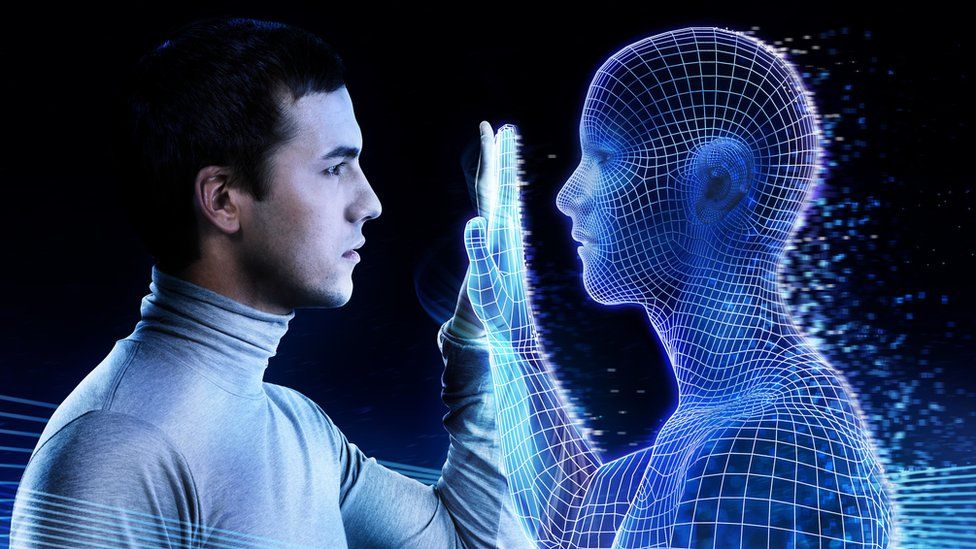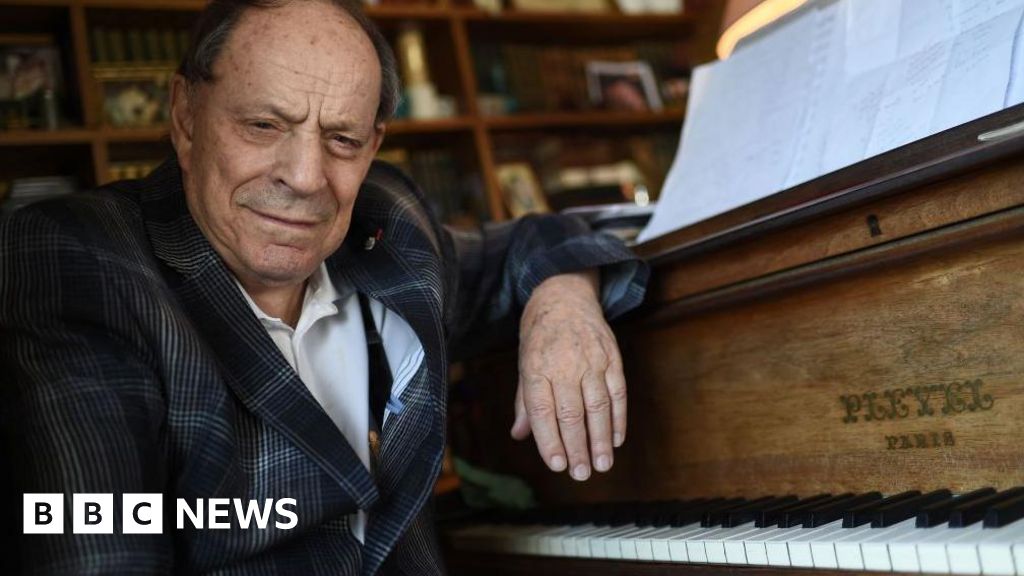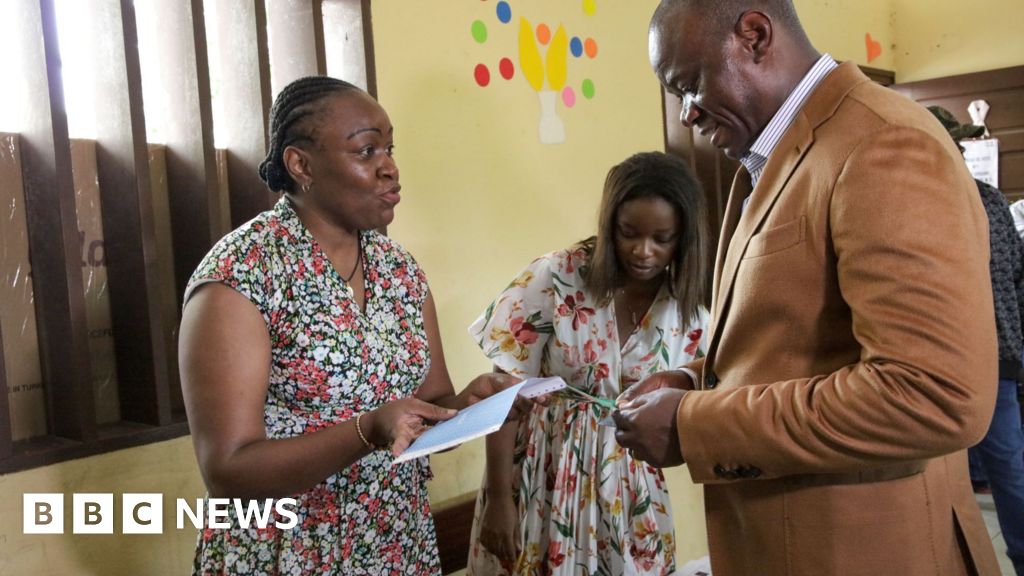ARTICLE AD BOX
By Jane Wakefield
Technology reporter
 Image source, Getty Images
Image source, Getty Images
Some experts say that thinking digital twins of humans may be just a decade away
Most of us have been told by a friend that we have a doppelganger - some stranger they passed on the street who bore an uncanny resemblance to you.
But imagine if you could create your very own twin, an exact copy of yourself, but one that lived a purely digital life?
We are living in an age where everything that exists in the real world is being replicated digitally - our cities, our cars, our homes, and even ourselves.
And just like the hugely-hyped metaverse - plans for a virtual, digital world where an avatar of yourself would walk around - digital twins have become a new, talked-about tech trend.
A digital twin is an exact replica of something in the physical world, but with a unique mission - to help improve, or in some other way provide feedback to, the real-life version.
Initially such twins were just sophisticated 3D computer models, but artificial intelligence (AI) combined with the internet of things - which uses sensors to connect physical things to the network - have meant that you can now build something digitally that is constantly learning from and helping improve the real counterpart.
Technology analyst Rob Enderle believes that we will have the first versions of thinking human digital twins "before the end of the decade".
Image source, Intel Free Press
Image caption,Rob Enderle says that there are ethical considerations to study as digital human twins are developed
"The emergence of these will need a huge amount of thought and ethical consideration, because a thinking replica of ourselves could be incredibly useful to employers," he says.
"What happens if your company creates a digital twin of you, and says 'hey, you've got this digital twin who we pay no salary to, so why are we still employing you?'?
Mr Enderle thinks that ownership of such digital twins will become one of the defining questions of the impending metaverse era.
We have already started the journey towards human twinning - in the form of the above mentioned avatars - but these are currently rather clunky and primitive.
In Meta's (formerly Facebook) virtual reality platform, Horizon Worlds, for example, you may be able to give your avatar a similar face to your own, but you can't even provide it with any legs because the technology is at such early stages.
Prof Sandra Wachter, a senior research fellow in AI at Oxford University, understands the appeal of creating digital twins of humans, "it is reminiscent of exciting science fiction novels, and at the moment that is the stage where it is at".
Image source, Sandra Wachter
Image caption,Prof Wachter says that digital human twins remain just science fiction at this stage
She adds that whether someone will "be successful at law school, get sick, or commit a crime - will depend on the still debated 'nature versus nurture question'.
It will depend on good luck and bad luck, friends, family, their socio-economic background and environment, and of course their personal choices."
However, she explains, AI is not yet good at predicting these "single social events, due to their inherent complexity. And so, we have a long ways to go until we can understand and model a person's life from beginning to end, assuming that is ever possible."
Instead, it is in the fields of product design, distribution and urban planning where the use of digital twins is currently the most sophisticated and extensive.
In Formula One racing, the McLaren and Red Bull teams use digital twins of their race cars.
Meanwhile, delivery giant, DHL, is creating a digital map of its warehouse and supply chains to allow it to be more efficient.
Image source, Getty Images
Image caption,McLaren has a digital twin of its latest car, which was used to aid its development
And increasingly our cities are being replicated in the digital world; Shanghai and Singapore both have digital twins, set up to help improve the design and operations of buildings, transport systems and streets.
In Singapore, one of the tasks of its digital twin is to help find new ways for people to navigate, avoiding areas of pollution. Other places use the technology to suggest where to build new infrastructure such as underground lines. And new cities in the Middle East are being built simultaneously in the real world and the digital.
French software company, Dassault Systemes, says it is now seeing interest from thousands of firms for its digital twins technology.
So far its work has included using digital twins to help a hair care firm digitally design more sustainable shampoo bottles, instead of endless real-life prototyping. This cuts down on waste.
Image source, Getty Images
Image caption,Authorities in Shanghai, pictured, have a digital twin of the city which they use to model its future development
And it is enabling other firms to design new futuristic projects - from jetpacks, to motorbikes that have floating wheels, and even flying cars. Each has a physical prototype too, but the refining of that initial model happens in the digital space.
But the real value seen in digital twins is in healthcare.
Dassault's Living Heart project has created an accurate virtual model of the a human heart that can be tested and analysed, allowing surgeons to play out a series of "what if" scenarios for the organ, using various procedures and medical devices.
The project was founded by Dr Steve Levin, who had personal reasons to want to create a digital twin. His daughter was born with congenital heart disease, and a few year's back, when she was in her late 20s and at high risk of heart failure, he decided to recreate her heart in virtual reality.
Boston Children's Hospital is now using this technology to map out real patient heart conditions, while at Great Ormond Street hospital in London, a team of engineers is working with clinicians to test devices that may help children with rare and difficult-to-treat heart conditions.
New Tech Economy is a series exploring how technological innovation is set to shape the new emerging economic landscape.
Experimenting on a digital heart also has the knock-on effect of cutting down on the need to test on animals - one of the more controversial aspects of scientific research, says Severine Trouillet, global affairs director at Dessault.
The firm now plans more digital organ twins, including the eye and even the brain.
"At some point we will all have a digital twin, so that you can go to the doctor, and we can increasingly make preventative medicine, and make sure that every treatment is personalised," says Ms Trouillet.
Perhaps even more ambitious than replicating human organs is the race to build a digital version of our entire planet.
US software firm, Nvidia, runs a platform called Omniverse, designed to create virtual worlds and digital twins.
One of its most ambitious projects is to build a digital doppelganger of the Earth, capturing high resolution imagery of its entire surface.
Image source, Nvidia
Image caption,A graphic illustration of Earth-2, which aims to help track and tackle climate change
Earth-2, as it is dubbed, will use a combination of deep-learning models and neural networks to mimic physical environments in the digital sphere, and come up with solutions to climate change.
In March this year, the European Commission, in conjunction with the European Space Agency among others, announced its own plans to make a digital twin of the planet, dubbed Destination Earth.
By the end of 2024, it hopes to have enough data from real-time observations and simulations to have a digital twin that will focus on floods, drought and heatwaves, alongside natural disasters such as earthquakes, volcanic eruptions and tsunamis, and provide countries with concrete plans to save lives in the face of these growing challenges.

 2 years ago
35
2 years ago
35








 English (US)
English (US)